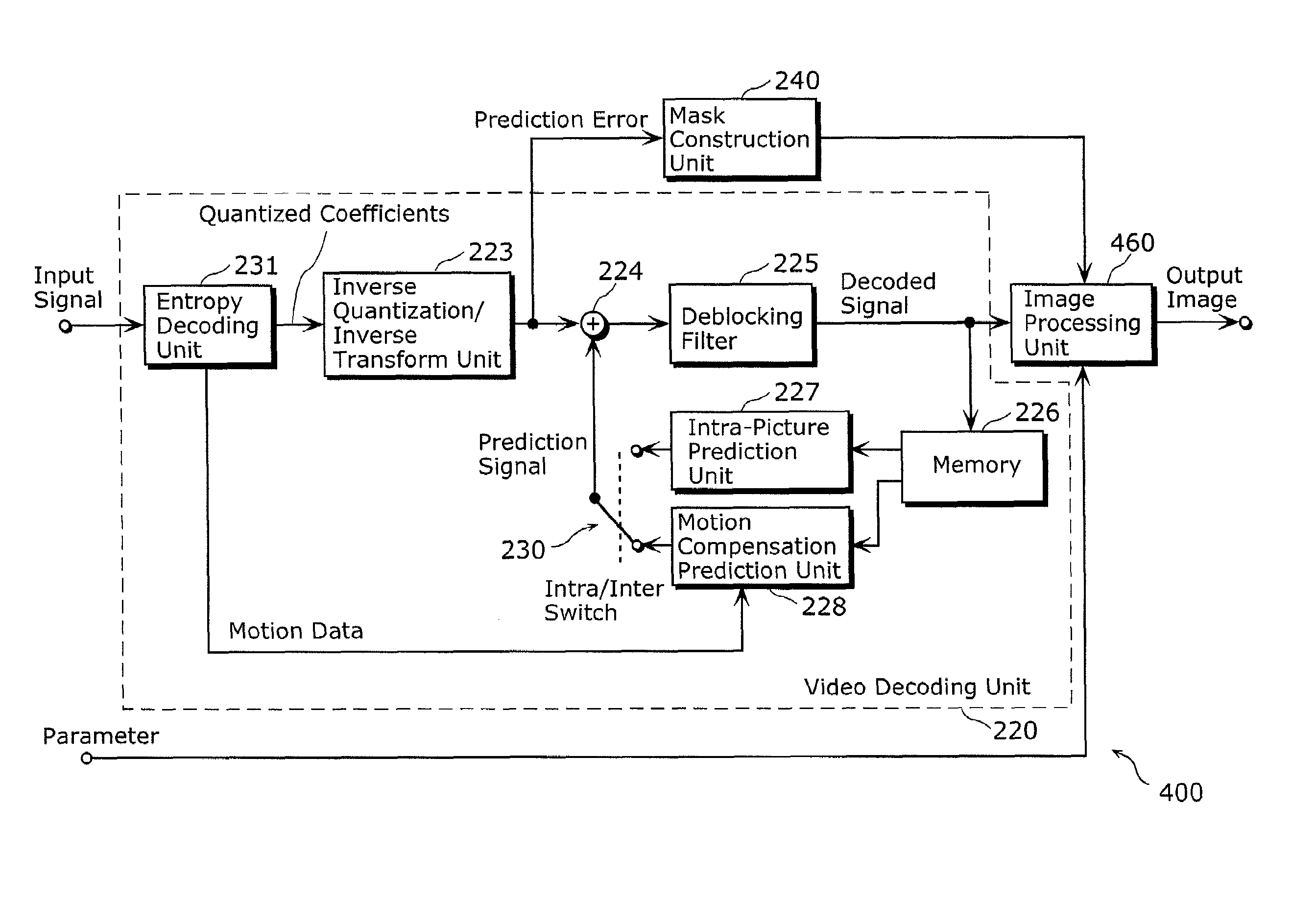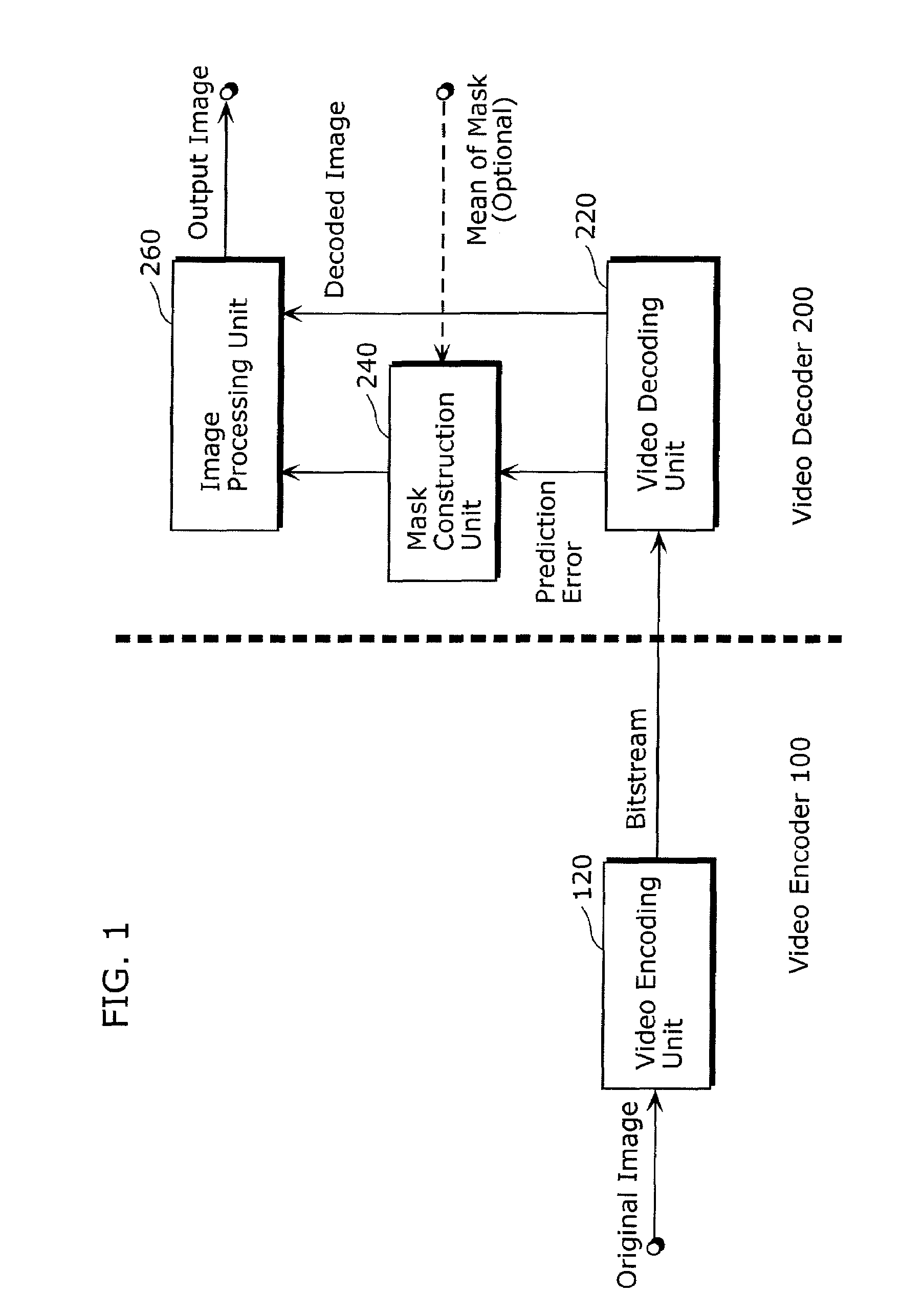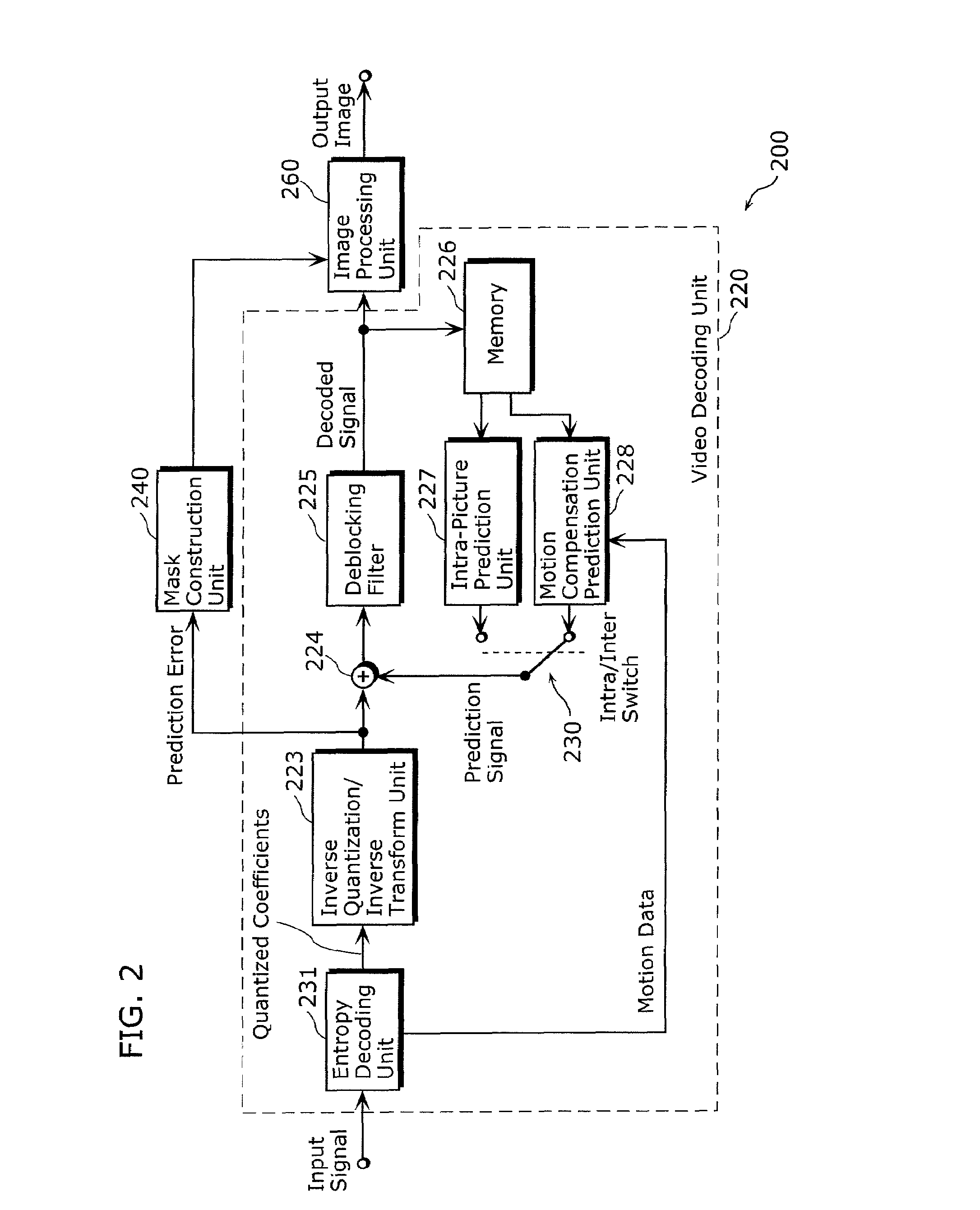Video decoding method and video encoding method
a video decoding and video encoding technology, applied in the field of prediction-based video decoding methods and prediction-based video encoding methods, can solve the problems of large amount of bits that have to be spent to really conserve the sharpness of original images, limited available bitrate in many applications, and may also be amplified coding artifacts, so as to reduce coding artifacts
- Summary
- Abstract
- Description
- Claims
- Application Information
AI Technical Summary
Benefits of technology
Problems solved by technology
Method used
Image
Examples
first embodiment
[0123]FIG. 1 is a block diagram illustrating an example of configuration of a codec system employing a mask-controlled image enhancement technique in accordance with the first embodiment of the present invention. The codec system illustrated in FIG. 1 includes a video encoder 100 and a video decoder 200.
[0124]The video encoder 100 encodes a video sequence. The video encoder 100 includes a video encoding unit 120.
[0125]The video encoder 120 receives a video sequence including original images, applies a video encoding method on the received video sequence, and thereby generates a bitstream representing the encoded video sequence. The video encoding unit 120 transmits the generated bitstream to the video decoder 200. The video encoding method may be any conventional prediction-based encoding method, including MPEG-2 and H.264 / AVC.
[0126]For example, the video encoding unit 120 includes the same elements as those in the video encoder 500 illustrated in FIG. 11. The video encoding unit 12...
second embodiment
[0182]The video encoding method and the video decoding method in the second embodiment further enhance image quality of decoded images using statistical properties of original images. A mask is constructed based on a value of prediction error also in encoding processing. Statistical properties of an original image are analyzed and the resulting statistical properties are applied to the mask to compute statistical parameters. In decoding processing, the statistical properties obtained by the analysis are used to apply post processing to a decoded image. Thereby, image quality of the decoded image can be enhanced more.
[0183]FIG. 7 is a block diagram illustrating an example of configuration of a codec system employing a mask-controlled image enhancement technique in accordance with the second embodiment of the present invention. The codec system of FIG. 7 includes a video encoder 300 and a video decoder 400. Hereinafter, like elements in the image codec systems in the first and second ...
PUM
 Login to View More
Login to View More Abstract
Description
Claims
Application Information
 Login to View More
Login to View More - R&D
- Intellectual Property
- Life Sciences
- Materials
- Tech Scout
- Unparalleled Data Quality
- Higher Quality Content
- 60% Fewer Hallucinations
Browse by: Latest US Patents, China's latest patents, Technical Efficacy Thesaurus, Application Domain, Technology Topic, Popular Technical Reports.
© 2025 PatSnap. All rights reserved.Legal|Privacy policy|Modern Slavery Act Transparency Statement|Sitemap|About US| Contact US: help@patsnap.com



